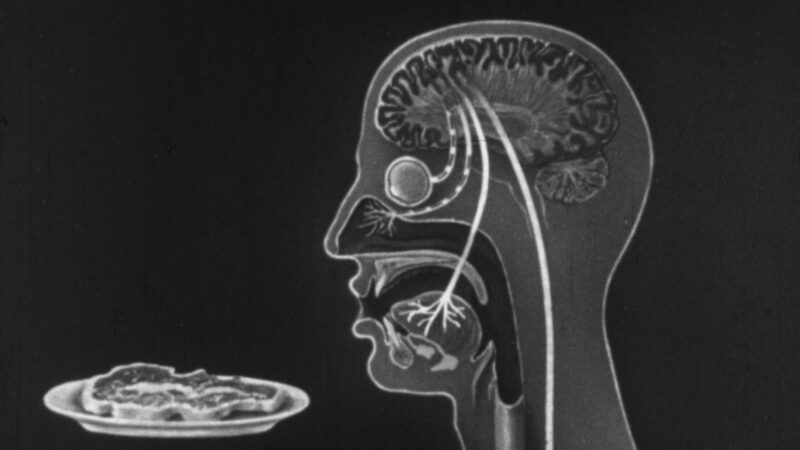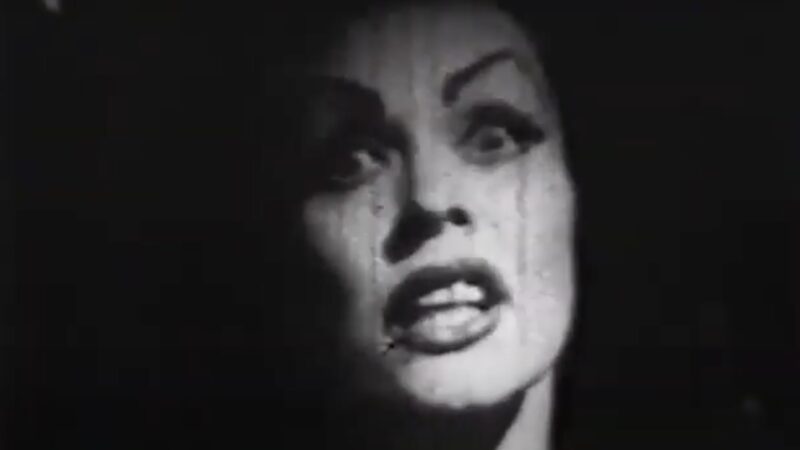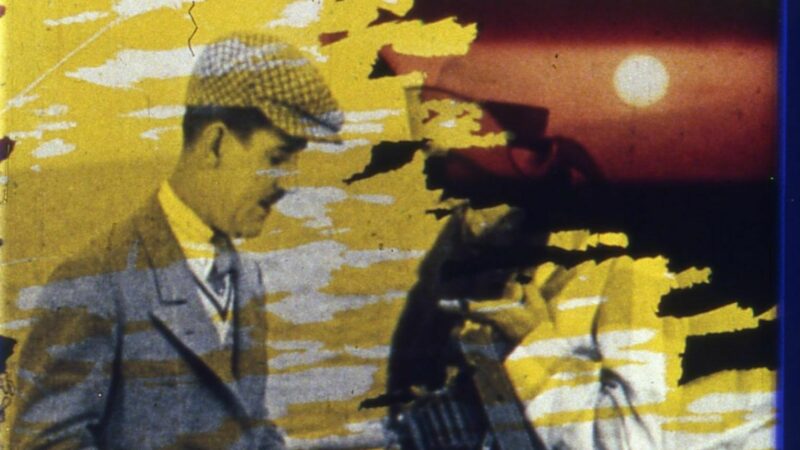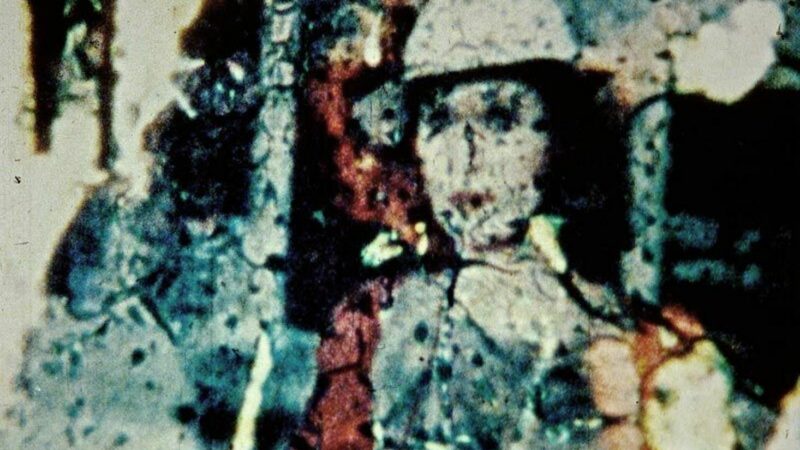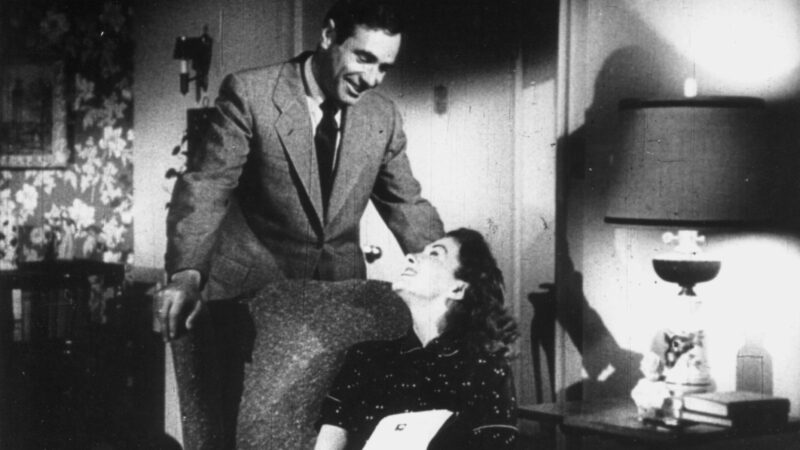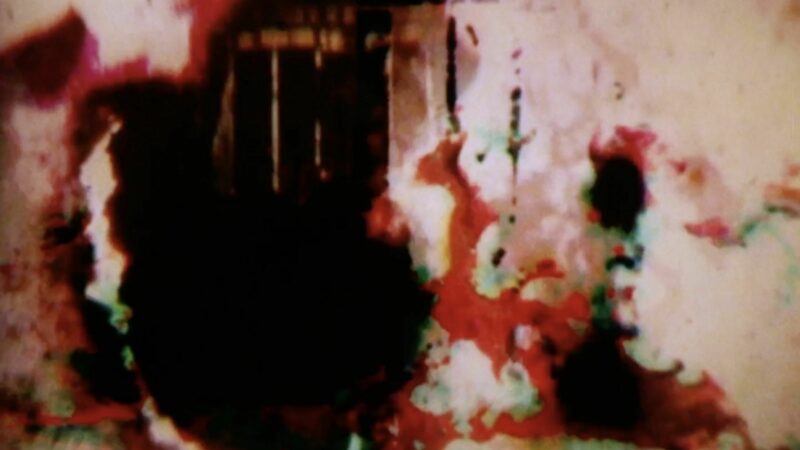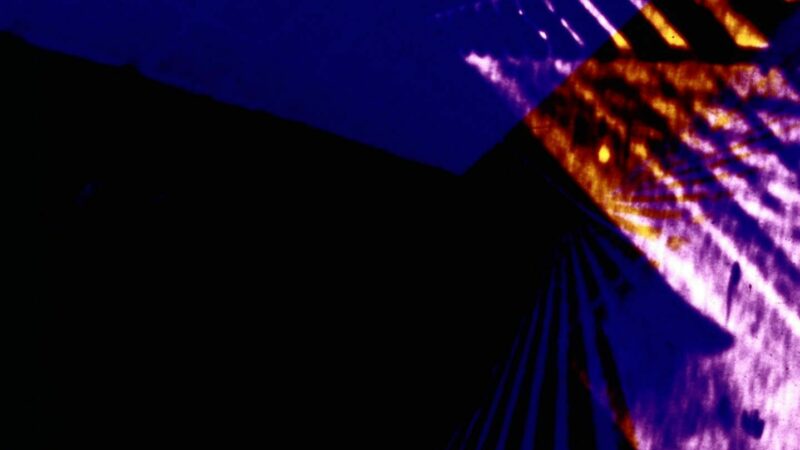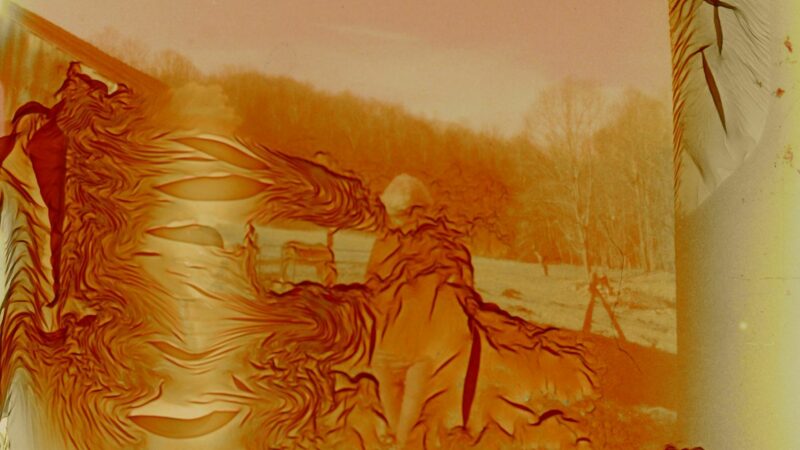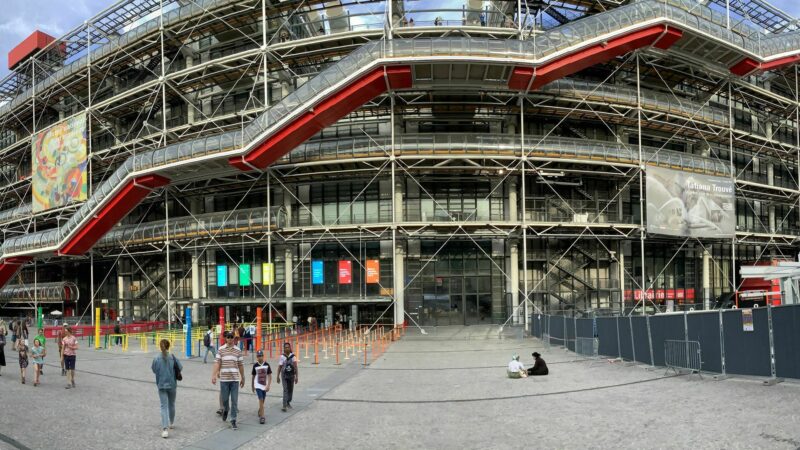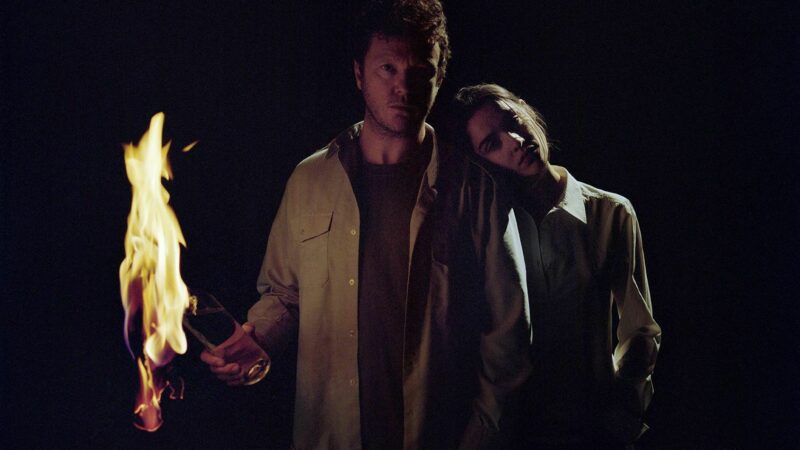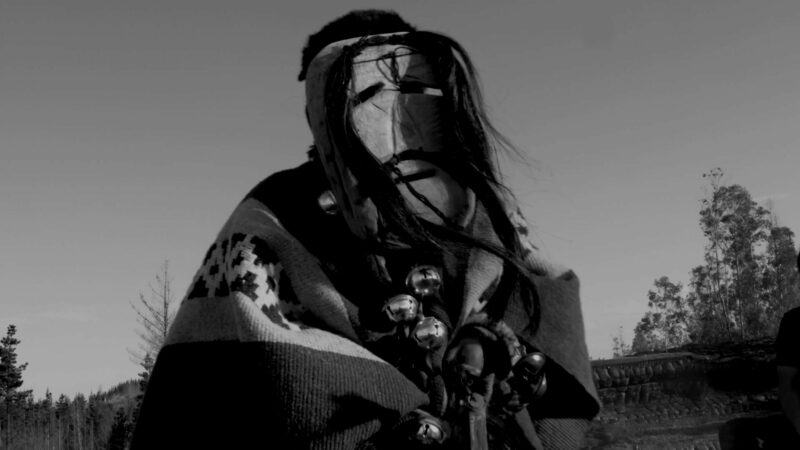
Présenté en salle uniquement.
Ces films font partie du programme Carte Blanche à Concordia Parcours / Pathways.
Lovesong #3
Trois qualités d’images peintes à la main s’entrelacent tout au long de ce film : un enchevêtrement de lignes épaisses délimitant des formes colorées ; de fines lignes noires, semblables à des dessins, qui évoquent le plus souvent des parties du corps reconnaissables, et des touches de couleur pure en interaction les unes avec les autres. Une irrégularité rythmique (produite par la répétition des images 2, 3 et 4 fois) génère une impression de force motrice propulsant cet enchevêtrement d’éléments essentiellement abstraits : aux trois quarts du film, cette intensité rythmique vacille, « ralentit », devenant presque une parodie de sa régularité sexuelle initiale. Plutôt qu’une variété au sein d’un battement régulier, les formes semblent adopter une variation plus lâche. Deux éléments formels semblent néanmoins « sauver la mise » : une augmentation des textures apparentes et des éclairs blancs intermittents. Ceux-ci permettent d’aboutir à une conclusion signifiante, cohérente à la fois sur le plan rythmique et tonal.
Lovesong #4
Œuvre complémentaire naturelle de Lovesong #3, ce film également peint à la main compense les irrégularités rythmiques et, pourrait-on dire, les désespoirs temporels, par une régularité du tempo, créant une progression absolue de sensations et de sens formels. L’impression de dessin linéaire et, par conséquent, de représentation figurative, laisse ici place à des formes dans l’espace, composées uniquement de quatre couleurs : lavande, violet, vert et turquoise. Leur danse dans l’obscurité évoque une interaction de corps. À la fin, un éclat illumine un champ blanc dans lequel une minuscule forme (presque semblable à des lèvres) palpite avant de disparaître en un dernier scintillement.
Ces films font partie du programme Carte Blanche à Concordia Parcours / Pathways.
Lovesong #3
Trois qualités d’images peintes à la main s’entrelacent tout au long de ce film : un enchevêtrement de lignes épaisses délimitant des formes colorées ; de fines lignes noires, semblables à des dessins, qui évoquent le plus souvent des parties du corps reconnaissables, et des touches de couleur pure en interaction les unes avec les autres. Une irrégularité rythmique (produite par la répétition des images 2, 3 et 4 fois) génère une impression de force motrice propulsant cet enchevêtrement d’éléments essentiellement abstraits : aux trois quarts du film, cette intensité rythmique vacille, « ralentit », devenant presque une parodie de sa régularité sexuelle initiale. Plutôt qu’une variété au sein d’un battement régulier, les formes semblent adopter une variation plus lâche. Deux éléments formels semblent néanmoins « sauver la mise » : une augmentation des textures apparentes et des éclairs blancs intermittents. Ceux-ci permettent d’aboutir à une conclusion signifiante, cohérente à la fois sur le plan rythmique et tonal.
Lovesong #4
Œuvre complémentaire naturelle de Lovesong #3, ce film également peint à la main compense les irrégularités rythmiques et, pourrait-on dire, les désespoirs temporels, par une régularité du tempo, créant une progression absolue de sensations et de sens formels. L’impression de dessin linéaire et, par conséquent, de représentation figurative, laisse ici place à des formes dans l’espace, composées uniquement de quatre couleurs : lavande, violet, vert et turquoise. Leur danse dans l’obscurité évoque une interaction de corps. À la fin, un éclat illumine un champ blanc dans lequel une minuscule forme (presque semblable à des lèvres) palpite avant de disparaître en un dernier scintillement.
Séance
• Université Concordia - J.A. de Sève, LB-125, Pavillon J. W. McConnell
Vendredi 21 mars 2025, 20:00 — 21:36
Réalisation

Stan Brakhage
Disponible en anglais seulement
Brakhage, born in 1933 in Kansas City, Missouri, is known for the personal character of his films. According to Mr. Richie, “He makes his pictures as lyric poets make their poems.” Just as the poet tries to make one feel, so Brakhage wants to make the viewer see. He finds sight “dulled by the daily uses to which we must put it,” and he attempts to recapture in his work the art of vision. To many poets and filmmakers the work of Brakhage has been, with its new ideas of vision, a mother lode of expanded techniques and fresh approaches. According to Sheldon Renan, author of “The Underground Film”, Brakhage films “present a rippling reality in which the photographic raw material of the filmmaker’s actual life is repeatedly transformed and reseen in a continual turbulence of movement, of color, of light.“
Brakhage considers the camera analogous to the eye, and film analogous to vision. His concept of vision “includes such things as the flashing abstract patterns the eye sees when shut, visual memories, imaginations, hallucinations, daydreams and night dreams,” notes Renan. “With distorting lenses, scratching, painting, superimpositions, editing and other methods of manipulating light, he has tried to put this composite vision on film.” Considered the major figure in the break from traditional film to purely personal and visual preoccupations, Brakhage thinks “there is no place for an artist in the film studios.” When he lived in New York he stayed with Maya Deren, the avant-garde filmmaker, was a friend of Marie Menken, also an experimental filmmaker, and worked with Joseph Cornell, the artist who suggested a film momento of the Third Avenue El, make by Brakhage, and titled “The Wonder Ring.“
Brakhage’s application of the art of vision has created many different kinds of film experiences. The eye learns to see things outside of their common context, as in “Nightcats”, in which Brakhage approximates the vision of cats, or in “Anticipation of the Night”, where he shows us the world through the innocent eyes of a child. For Brakhage, the camera-eye is capable of much more than realism. In fact, “The ‘absolute realism’ of the motion picture image is human invention,” he says, “a twentieth-century Western illusion.” He believes that the filmmaker can hand-hold the camera and inherit worlds of space, that he can use filters, such as fog, rain, light, glass, and he can “deliberately spit on the lens or wreck its focal intentions.”. In sum, the reality of Brakhage is the reality of the “lost” art of vision itself. As he says, “To search for human visual realities man must, as in all other homo-motivation, transcend the original physical restrictions and inherit the world of eyes.“
Notes biographiques fournies par l’équipe du film et éditées par Le FIFA.
Brakhage, born in 1933 in Kansas City, Missouri, is known for the personal character of his films. According to Mr. Richie, “He makes his pictures as lyric poets make their poems.” Just as the poet tries to make one feel, so Brakhage wants to make the viewer see. He finds sight “dulled by the daily uses to which we must put it,” and he attempts to recapture in his work the art of vision. To many poets and filmmakers the work of Brakhage has been, with its new ideas of vision, a mother lode of expanded techniques and fresh approaches. According to Sheldon Renan, author of “The Underground Film”, Brakhage films “present a rippling reality in which the photographic raw material of the filmmaker’s actual life is repeatedly transformed and reseen in a continual turbulence of movement, of color, of light.“
Brakhage considers the camera analogous to the eye, and film analogous to vision. His concept of vision “includes such things as the flashing abstract patterns the eye sees when shut, visual memories, imaginations, hallucinations, daydreams and night dreams,” notes Renan. “With distorting lenses, scratching, painting, superimpositions, editing and other methods of manipulating light, he has tried to put this composite vision on film.” Considered the major figure in the break from traditional film to purely personal and visual preoccupations, Brakhage thinks “there is no place for an artist in the film studios.” When he lived in New York he stayed with Maya Deren, the avant-garde filmmaker, was a friend of Marie Menken, also an experimental filmmaker, and worked with Joseph Cornell, the artist who suggested a film momento of the Third Avenue El, make by Brakhage, and titled “The Wonder Ring.“
Brakhage’s application of the art of vision has created many different kinds of film experiences. The eye learns to see things outside of their common context, as in “Nightcats”, in which Brakhage approximates the vision of cats, or in “Anticipation of the Night”, where he shows us the world through the innocent eyes of a child. For Brakhage, the camera-eye is capable of much more than realism. In fact, “The ‘absolute realism’ of the motion picture image is human invention,” he says, “a twentieth-century Western illusion.” He believes that the filmmaker can hand-hold the camera and inherit worlds of space, that he can use filters, such as fog, rain, light, glass, and he can “deliberately spit on the lens or wreck its focal intentions.”. In sum, the reality of Brakhage is the reality of the “lost” art of vision itself. As he says, “To search for human visual realities man must, as in all other homo-motivation, transcend the original physical restrictions and inherit the world of eyes.“
Notes biographiques fournies par l’équipe du film et éditées par Le FIFA.
Dans la même séance
Université Concordia - J.A. de Sève, LB-125, Pavillon J. W. McConnell
Vendredi 21 mars 2025, 20:00


Vous aimerez aussi




